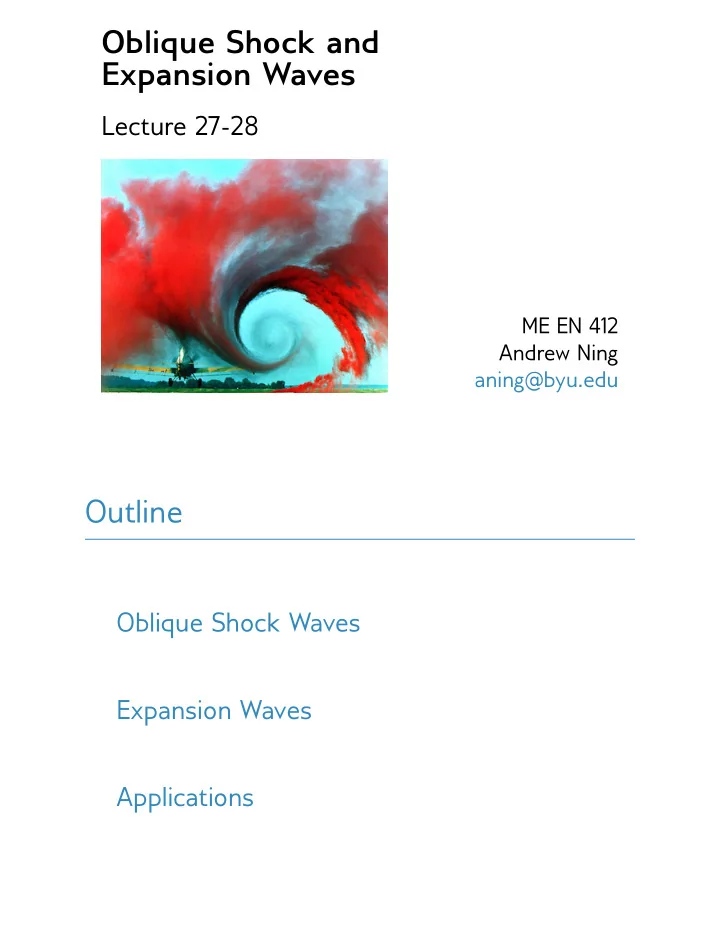

Oblique Shock and Expansion Waves Lecture 27-28 ME EN 412 Andrew Ning aning@byu.edu Outline Oblique Shock Waves Expansion Waves Applications
Oblique Shock Waves
NASA, Public Domain V 1 n V 1 t V 2 V 1 V 2 t V 2 n
β M > 1 θ • shock angle: β • turning angle: θ M 1 n = M 1 sin β M 2 n = M 2 sin( β − θ ) 90 80 70 β : shock angle (degrees) M =1 . 5 M =2 M =3 M = ∞ 60 50 40 30 20 10 0 0 10 20 30 40 50 θ : deflection angle (degrees) 1 sin 2 β − 1) tan θ = 2 cot β ( M 2 M 2 1 ( γ + cos(2 β )) + 2
Bow shock 5 1 2 3 4 β 4 5 supersonic 3 θ 2 subsonic 1 Example Uniform supersonic flow ( M 1 = 3 , p 1 = 1 atm, T 1 = 300 K) encounters a corner and deflects by 20 ◦ . Find the shock wave angle and p 2 , T 2 , M 2 , p T 2 , T T 2 .
Expansion Waves Expansion Waves
Prandtl-Meyer function � γ + 1 � γ − 1 γ − 1 tan − 1 ν ( M ) = γ + 1( M 2 − 1) − tan − 1 � M 2 − 1 The turning angle is a function of this equation θ = ν ( M 2 ) − ν ( M 1 ) Applications
Applications What must exist at the exit of an overexpanded and underexpanded nozzle? External Flow Diamond airfoil at zero angle of attack.
Example: Flat plate at 5 ◦ angle of attack in M = 2 . 6 freestream. What are lift and drag coefficients.
Recommend
More recommend